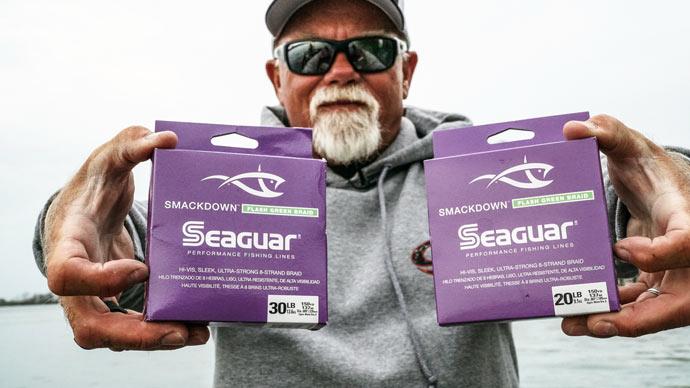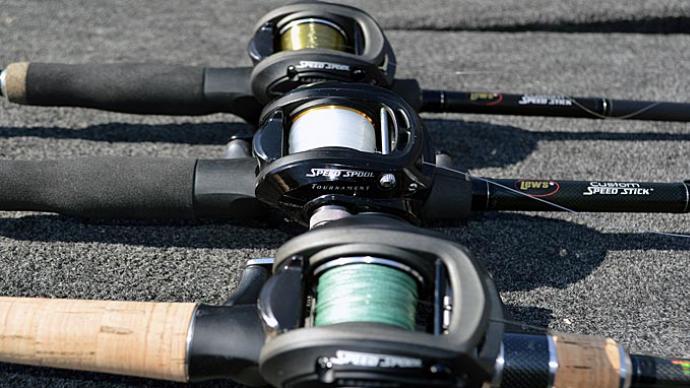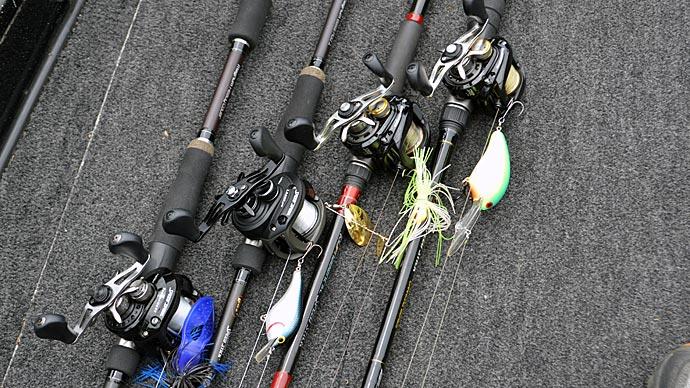So many choices and options, where does one begin?
In the good old days of my high school existence, fuel for my 1947 four-cylinder Jeep came by virtue of a high-paying (50 cents per hour) job at the local A&P. Fishing line came at less than a dollar for a zillion-yard spool from the local Gibson's store. The Jeep sometimes would shift gears and the line would sometimes work on my Zebco 33's. Never mind that the 10-pound test line had a diameter of small anchor rope and the flexibility of a welding rod, it was cheap.
Then a couple of companies changed the way all fishermen looked at line and the options we had for selection and balanced line for our particular fishing styles. The really major breakthrough came from DuPont who developed the Stren product and hot on the heels were the Berkley products.
The Stren folks have always spoken of line properties. These are just as important for us to understand when we choose our line today as when I first heard them introduced in the late 60's. These include: high knot strength, high abrasion strength, high shock strength, high tensile strength, proper limpness, controlled stretch, and desired range of visibility. One of their earlier arguments was that the original, and familiar, Stren offered the best blend of the desired properties. Even today both major companies offer a product that is billed as having the best all-round meshing of the desirable traits.
Now, having said that, I must point out that each company offers an array of variations that provide products that emphasize one of several of the seven properties at the detriment of some of the other desired features. The fisherman really has to be up on what he or she is buying or may pay for a premium line that has great castability and poor abrasion resistance. It isn't as simple as buying a premium brand line and being assured that you are getting the best product for your needs, unless you are sure as to what features you want to emphasize.
Let's look at some of the options, starting with monofilament line. DuPont invented florescent fishing line and in the early days Berkley advertisements strongly targeted neutral visibility factors in line as being important. If you have seen their solar color, you know that there had to be a market for bright florescent lines. If you believe that a clear, or low visibility green line, gets you more bites then in no way should you try to fish florescent. If you believe seeing the line due to a photochromatic feature or clear blue florescent allows you to see additional strikes, then you have made a wise choice based on your own confidence level.
From my own personal experience, including trying the wide variations of colors, it appears that line visibility becomes a factor in very clear water with slow-moving baits such as a jig or soft plastics.
I have never been able to prove any difference in strike rate when using crankbaits, with even the brightest florescent colors. You certainly want line to have adequate strength to do the job you require. But strength is a multi-point issue. You must have good knot strength or the pound test of a line means nothing. This is not only governed by the inherent properties of the line you use, but also how well you can repetitively tie a highly efficient knot. A good, reproducible, knot doesn't have to be complex. In fact a Palomar can be taught to anyone in a short period of time and is highly reproducible. While it takes a little more practice, a Trilene knot once mastered is a 95 percent efficient knot with each tie.
The other side of the coin is that the inherent strength of the line is only as good as its abrasion resistance unless you plan to fish in open water. Thus a very thin monofilament is much less forgiving of a nick than a thicker equal pound test product that wears better. Both the major companies offer a more durable product. Stren Super Tough is billed as having added tensile strength and heavier break load, while Berkley Big Game started as a saltwater product that caught on with bass fishermen because of both the cost efficient packaging and its durability in rough abrasive conditions.
The answer to providing the smallest diameter line for the heavier pound test and a product with little stretch, thus fast hook set, was a niche that the braided lines sought to fill. An advantage of smaller diameter line is that you always get better feel, drive a crankbait to greater depths than with a thicker line, and have less wind resistance on a cast.
So, what happened to the braided line craze? It's growing stronger than ever. The early problems with braid have now been solved, and as a result, there is now a large selection available from numerous marketers.
There are other little gems that come to the surface about some of the lines. Such as a contact at Berkley (who shall remain anonymous for obvious reasons) that stated he caught as many fish with Fireline braid when using crankbaits, but used a monofilament leader when working slow moving soft plastics.
Another product began to surface in the marketplace, the fluorocarbon lines. Their cost is close to that of braided lines. The advantage is that they are billed as being very abrasive resistant, very sensitive, and have the refractive index of the water. The last point means they essentially disappear when in a water medium. A couple of friends have been using this product as a leader for a year or so and seem to verify the properties as billed.
Another question is what pound test should you choose? This depends on several factors including the obvious of if your reel will handle a given pound test better than other sizes and what kind of conditions you are going to fish. If you are going to fish in thick cover then you have to go to a higher pound test line than you might need for fishing open water. Can you get by with 10-pound test on crankbaits? Sure, if you aren't going to work them through brush and you must also retie more often than with heavier line.
So, if you're going to buy some line, get a premium product but determine which properties you want before selecting one. I advise you buy a small spool of a specialty line or, better yet, have you local tackle shop spool up one reel so you can assess a given brand in actual fishing conditions.
If you want to try the safe way, buy a product from a major company that has the best combined features, as listed on the box. This might be preferable to buying one of the specialty products that emphasize some features and sacrifice others.




